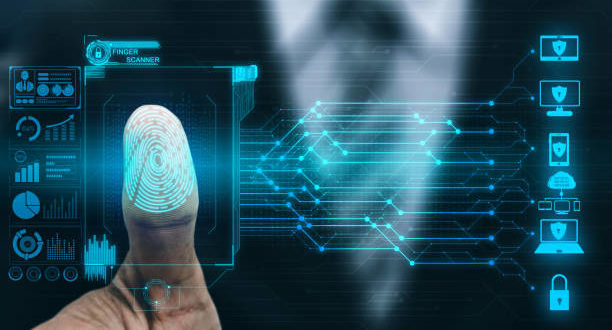Biometric technologies refer to the use of OCR technology to data about a person that is based on a biological trait. Biometric authentication is one of the first and very well biometric technologies to be placed under the category of digital evidence. With the widespread use of CCTV cameras in large cities, the use of the data collected by these cameras has become a flashpoint for privacy and human rights concerns. Following the September 11th attacks, the use of face recognition software as a means of detecting potential threats, specifically in heavily populated areas, has been intensively investigated.
Many consumer and corporate security solutions are incorporating biometrics as an enhanced layer. Because of the unique identifiers in your genes and habits, this may appear to be infallible. Many people, on the other hand, are apprehensive of utilizing biometric identification as a stand-alone identity provider.
Standard login details have long been a vulnerable point for surveillance equipment, and conventional cybersecurity is focused on lowering the dangers associated with this strong security solution. Biometrics tries to address this problem by tying verifiable evidence to our bodies and tendencies.
Biometric Authentication in Banking Industry
Banking security has largely remained the same for as long as many of us can recall. Since the introduction of Chip and Pin, if you wish to use your bank card to make transactions, make a withdrawal, or take your money in any other way, you just enter your Pin code and go.
While protection has been this way for a long time, it appears that times are changing, particularly with the arrival of biometric security. There’s no doubting that biometric authentication has advanced significantly in recent years, if not almost a decade. While it may seem like something out of a contemporary sci-fi film, it is unquestionably becoming more mainstream.
And anyway, biometric technology is likely to be employed in your daily life, particularly when it comes to unlocking our cellphones and completing specific security duties utilizing fingerprint sensors. Face and eye detectors have also been installed in a lot of high facilities.
What Impact Will Biometrics have on the Banking Industry?
Of course, we can only speculate and speculate at this stage about how this technology will impact things. We never know what innovations will be released in the coming years or what kinds of changes the universe will see, but we can always come up with some precise ideas to get us all off to the highest suitable start and to help us start planning for what’s ahead, as well as to address any possible future problems in advance, using the relevant data we have.
Also, keep in mind that these innovations will play a distinct function in various channels and markets. So, here are a few suggestions:
In traditionally card-based transaction economies with current payment architecture, biometrics will play only a minor part in card payment authentication at the point of sale. This is possibly the most logical application of biometrics in today’s environment.
Future of Biometric Technology
Biometric technology is increasingly becoming ingrained in people’s daily lives all over the world. Many of us use biometric document verification on a regular basis as a result of smartphone interaction. Medicine, finance, marketing research, and a variety of other companies that require personal identity will all benefit from biometric tendencies in the future.
Many biometric applications are developing and tested right now. However, these biometric technologies will be widely used in a few years. Plastic cards will soon fade into oblivion, and biometric scans will become a commonplace procedure.
The general opinion of biometrics appears to be a concern. You have fingers, eyes, and a face, as everyone knows. Open biometric data, on the other hand, is only the tip of the iceberg. Every imaginable attribute is being studied, from heart rate sensor to implanting chips under your skin, as well as examining intraocular veins, the structure of your earlobes, and more.
Accessibility is going to be the key to biometric security in the future. The simplest technique to provide a high level of protection is to improve modern methods. You can, for instance, scan a 3d view of a fingerprint and examine every detail.
Conclusion
Summary Biometric identification will likely play a significant role in the futuristic society of payments, however, it is unclear how significant this function will be. Biometric identification is likely to remain unaccepted in traditional card-based payment systems, but it will continue to grow in the mobile technology sector. Biometric technology, on the other hand, might be huge in systems that don’t have a card platform.
Biometric authentication as a technique of boosting payment system security will also encourage by legal and regulatory activities. There is a legislative push for strong consumer authentication systems in Europe, for example.
While biometric authentication is unlikely to totally replace PINs and passwords in the near future, it will play an increasingly important role in a wider range of authentication methods. The nature of the transaction, the possibility of deception, and the buying channel will all influence the identity management used for each payment.



